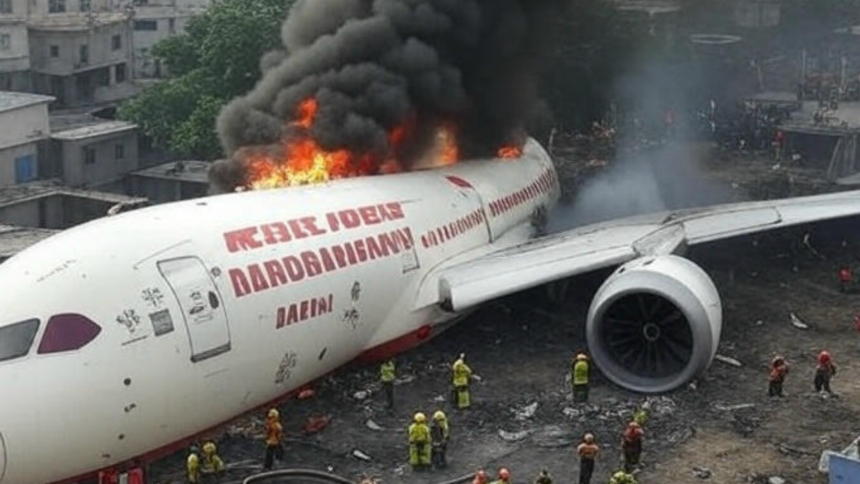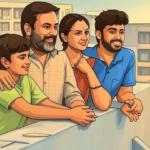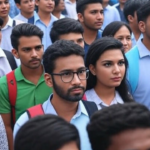On June 12, 2025, a devastating tragedy struck Ahmedabad, Gujarat, when Air India Flight AI171, a Boeing 787-8 Dreamliner, crashed shortly after takeoff from Sardar Vallabhbhai Patel International Airport (SVPIA). The London-bound flight, carrying 242 passengers and crew, including former Gujarat Chief Minister Vijay Rupani, plummeted into the densely populated Meghani Nagar area, sparking a massive fire and prompting an urgent response from emergency services. The incident, one of the worst aviation disasters in recent Indian history, has left the nation grappling with grief and questions about air safety.
The flight departed SVPIA at around 1:38 p.m. IST, with Captain Sumeet Sabharwal and First Officer Clive Kundar at the controls. Minutes after takeoff, the aircraft issued a distress signal to air traffic control, indicating a critical issue. Eyewitnesses described a horrifying scene as the plane, struggling to maintain altitude, crashed into a residential building, believed to be a doctors’ hostel, near the airport’s boundary. The impact triggered a deafening explosion and a towering blaze, with thick black smoke visible across the city. Debris scattered across the site included parts of the aircraft’s fuselage, now reduced to charred wreckage.
Initial reports point to a possible engine malfunction as the cause, though investigators are still piecing together the sequence of events. The flight carried 230 passengers—217 adults, 11 children, and 2 infants—along with 12 crew members. The passenger manifest included 169 Indian nationals, 53 British citizens, seven Portuguese, and one Canadian. Vijay Rupani, a prominent political figure, was among those on board, traveling to visit family in London. While exact casualty figures are yet to be confirmed, authorities fear over 120 fatalities, with rescue operations ongoing to locate survivors.
Emergency response teams sprang into action, with fire brigades battling the inferno and police securing the area. Gujarat Chief Minister Bhupendra Patel directed officials to prioritize rescue efforts, establishing a green corridor to rush the injured to nearby hospitals, including the Civil Hospital, which declared an emergency. Prime Minister Narendra Modi expressed his condolences, calling the crash a “profound tragedy” and pledging full support to the affected families. SVPIA has halted all operations, causing widespread travel disruptions as airlines issue advisories to passengers.
The crash’s impact extended beyond the aircraft, affecting the surrounding Meghani Nagar neighborhood. The collision with a residential structure caused significant damage and injuries on the ground, compounding the tragedy’s toll. Social media platforms have been flooded with images and videos of the disaster, including a harrowing clip showing the plane’s final moments as it plummeted, followed by a fiery explosion. The footage, widely shared online, underscores the scale of the catastrophe and the urgency of the response.
The Directorate General of Civil Aviation (DGCA) has launched a comprehensive investigation, with experts examining the flight data recorder, cockpit voice recorder, and maintenance logs. The Boeing 787-8, a modern and reliable aircraft, makes the crash particularly alarming, raising concerns about maintenance standards and operational protocols. Air India has set up a helpline for families and promised regular updates, but public outrage is growing as questions mount about the airline’s safety measures.
The human cost of the disaster is immense. Families await news of loved ones, while the local community rallies to support rescue efforts. Political leaders, including Aam Aadmi Party’s Manish Sisodia, have called for solidarity, urging volunteers to assist in relief operations. The Gujarat government has committed to providing aid, but the scale of the disaster presents significant challenges, particularly in identifying victims and supporting survivors.
This tragedy has cast a spotlight on aviation safety in India, prompting calls for stricter oversight and accountability. As investigators work to determine the cause—whether mechanical failure, human error, or another factor—the nation mourns the loss of life and prays for those still being rescued. The Ahmedabad crash is a stark reminder of the risks inherent in air travel and the critical need for robust safety systems. For now, the focus remains on supporting the victims, their families, and the community, as India navigates the aftermath of this heartbreaking event.





